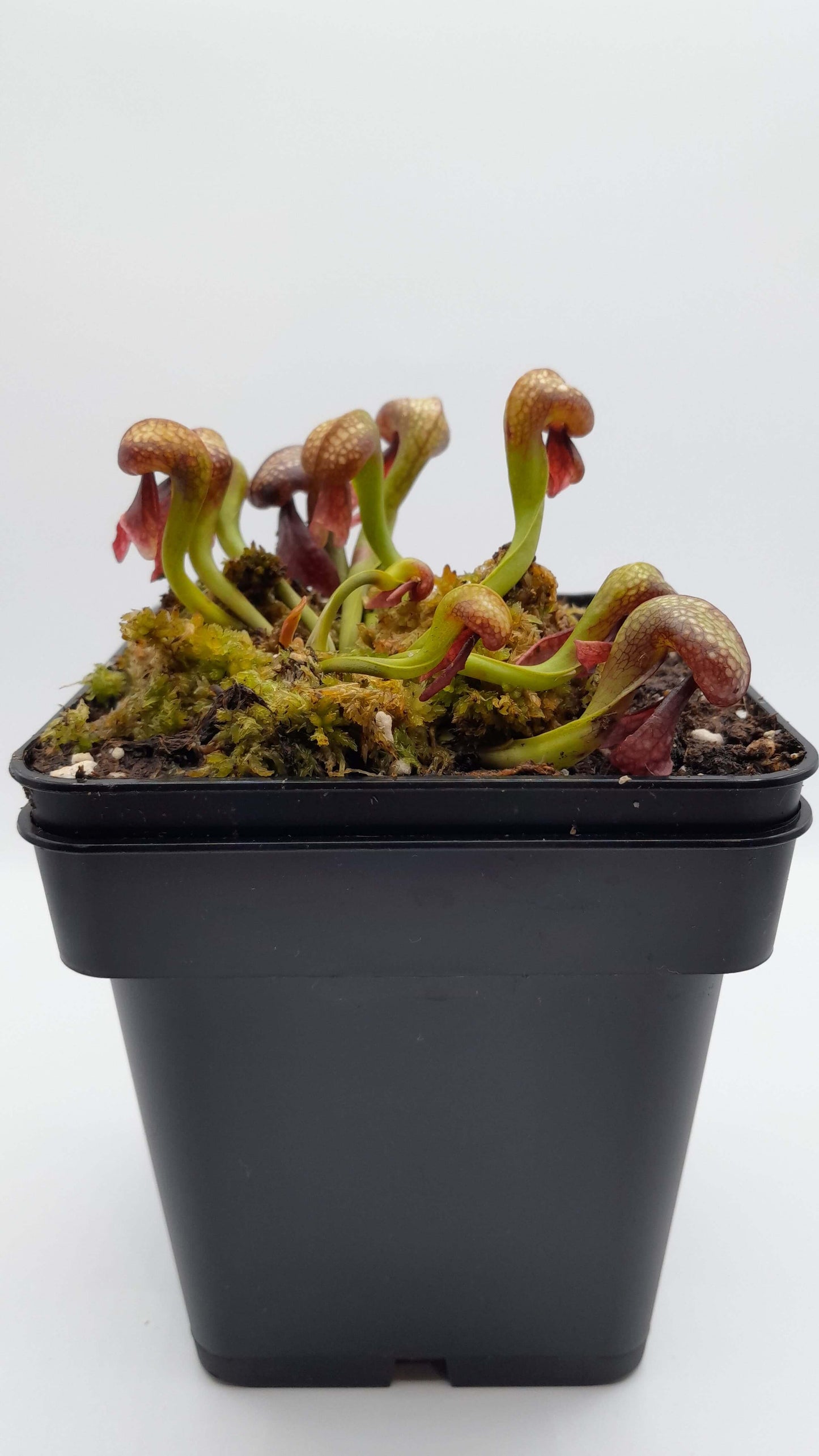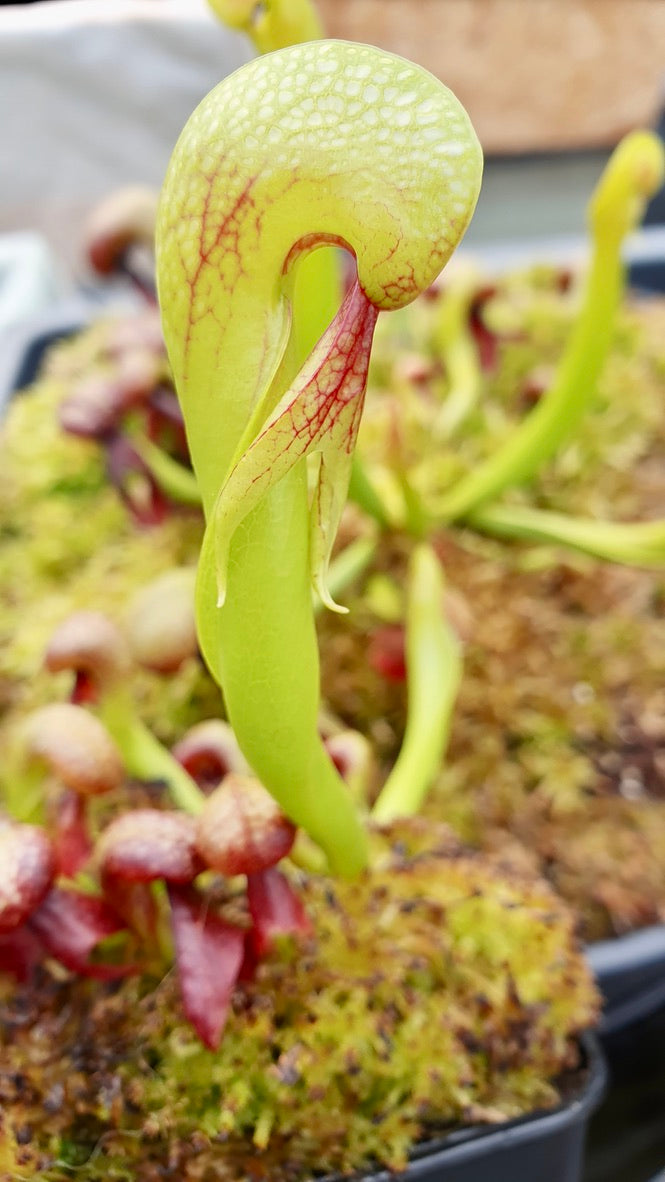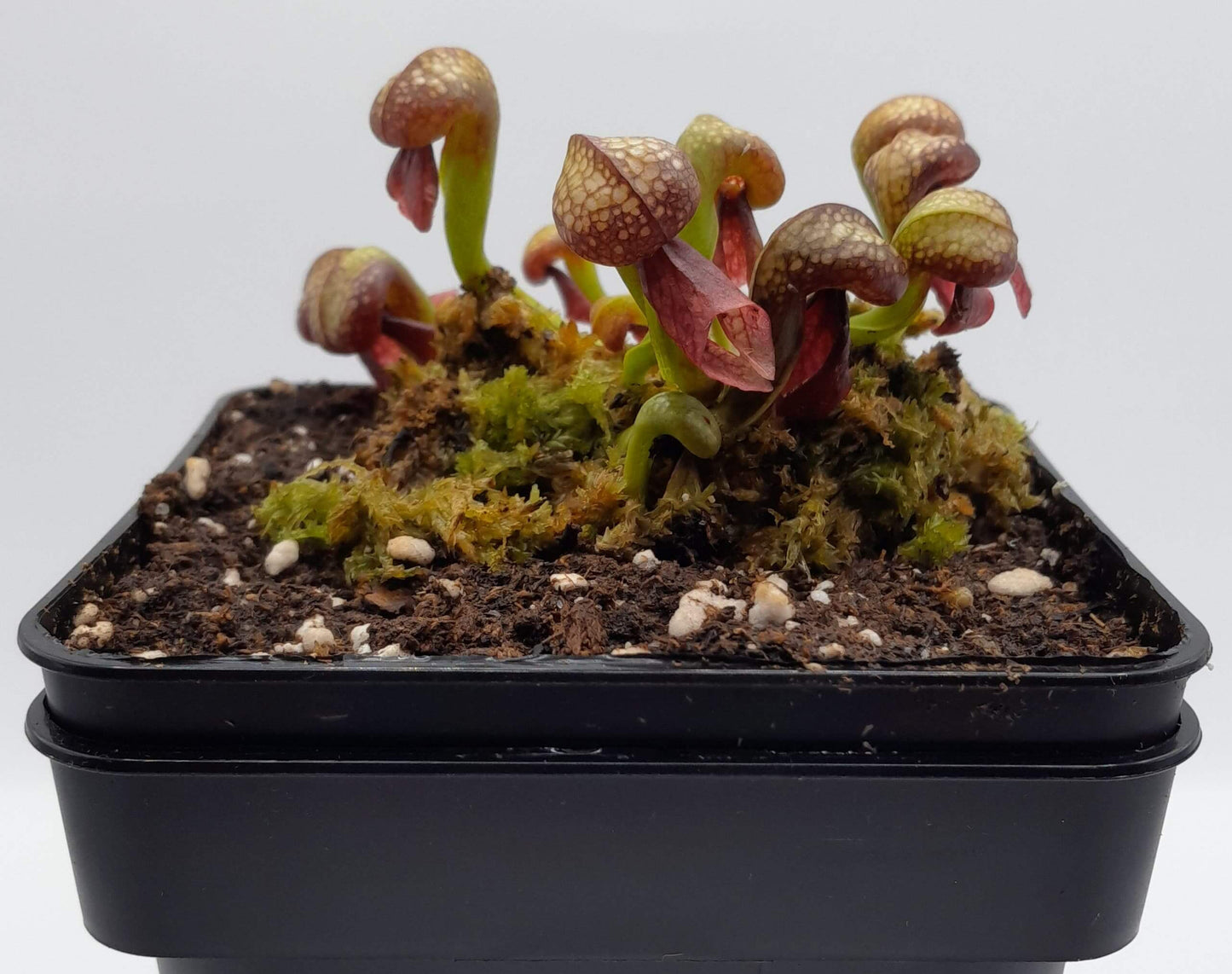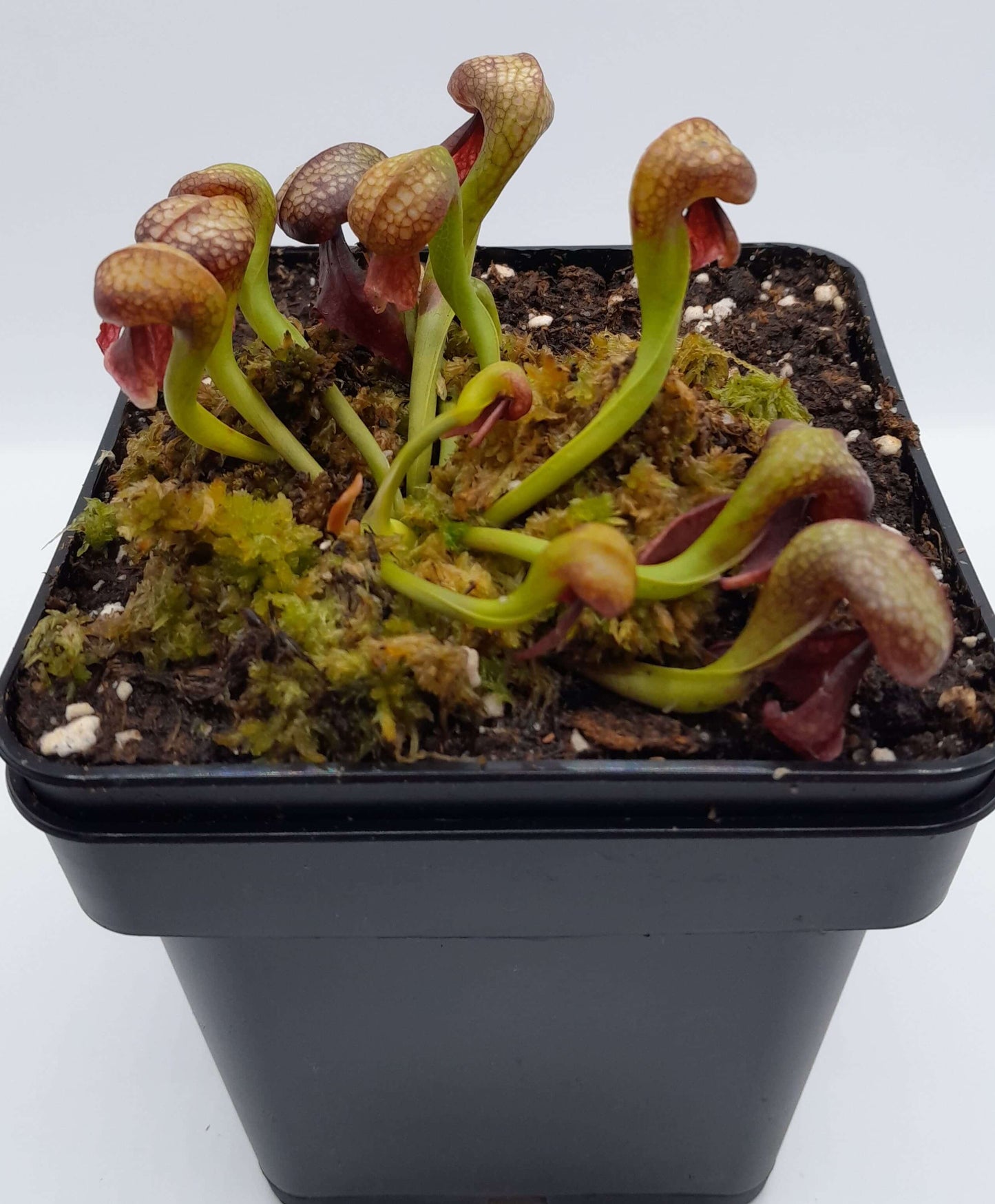Carnivorous plant, darlingtonia
Darlingtonia californica
Darlingtonia californica
Couldn't load pickup availability
Details
Details
Adult plant with a developed root system. Please note that the carnivorous plants you receive may not be identical in size and appearance to those shown in the photos.
Shipping throughout the year
Shipping throughout the year
Adult plant sent with its original pot, rest assured, they will be well protected during shipping. You can see our article on shipping and packaging here




Description du Darlingtonia californica
Darlingtonia californica, nicknamed "cobra plant", is a unique carnivorous plant native to coastal regions of Oregon and California. Recognizable by its tube-shaped traps, reminiscent of the silhouette of a snake ready to capture its prey, it can reach 1m in height. Difficult to grow, it represents an exciting challenge for lovers of carnivorous plants wishing to add this carnivorous plant to their collections.
Maintenance tips :
Temperature: Between 15°C and 40°C, can withstand freezing temperatures down to -10°C, but only for short periods with positive daytime temperatures. Don't be afraid of the snow.
Water: For watering, I recommend either watering from above in the morning preferably or by capillary action, using rain, osmosis or demineralized water. Avoid stagnant water, especially during summer periods, as it encourages the proliferation of bacteria, which can be fatal for the roots of Darlingtonia plants. Periodically renew the water in the tank to have fresh water, while always keeping the pots immersed at least 3 cm in the water, or more depending on the size of the pot. I also advise you to consider using a water fountain or a small pump coupled with a UV lamp for optimal cultivation.
Light: Full sun to partial shade.
Dormancy: Requires a dormant period from October to March. During this time the growth of the traps will be slowed and most will turn brown, you can cut them back at the end of winter. Pot always outside, exposed to full sun, and in a soaking substrate. You can learn more about proper care here.
Substrate: You can opt for different types of substrate. For a basic culture, choose a mixture of blond sphagnum peat moss mixed with perlite, in proportions of 50% peat and 50% perlite, a mixture of 50% peat with dead sphagnum moss and perlite. For an optimal substrate, I recommend a mixture of equal parts peat and perlite to fill half the pot, then complete with a mixture of dead sphagnum and perlite, with a layer of live sphagnum moss topping. You can also find a special substrate designed for carnivorous plants in our online store here.




